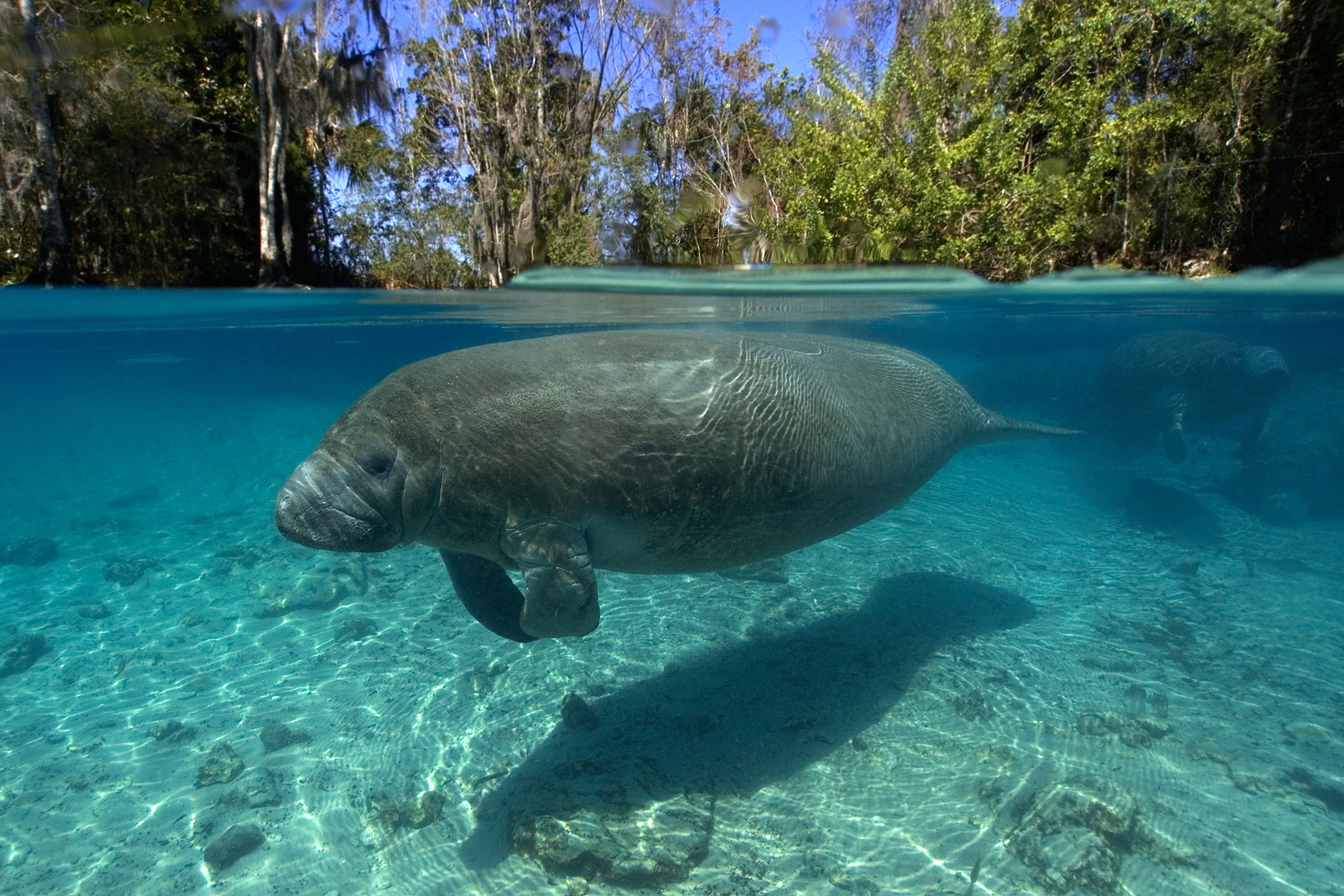8 things you need to know about manatees, as record die-off in Florida puts species in peril
Florida’s manatees are dying in record numbers.

Your support helps us to tell the story
This election is still a dead heat, according to most polls. In a fight with such wafer-thin margins, we need reporters on the ground talking to the people Trump and Harris are courting. Your support allows us to keep sending journalists to the story.
The Independent is trusted by 27 million Americans from across the entire political spectrum every month. Unlike many other quality news outlets, we choose not to lock you out of our reporting and analysis with paywalls. But quality journalism must still be paid for.
Help us keep bring these critical stories to light. Your support makes all the difference.
We don’t want to meet anyone not charmed by the gormless but friendly face of a manatee, the docile aquatic herbivores affectionately known as sea cows. But tragically this long-troubled species is facing more difficulties than ever, with monitoring authorities in Florida currently recording the highest number of annual manatee deaths in a year only half over.
The die-off is dire for more than the manatees themselves. Manatees are ‘indicator species’ that thrive on a flourishing ecosystem, and their status can imply a lot about the health of their underwater habitat.
Founded in 1981 by singer-songwriter Jimmy Buffett and then Florida governor Bob Graham, the Save the Manatee Club offers up several ways you can help these endangered creatures, such as adopting a manatee or purchasing an annual membership.
In the meantime, here are a few things everyone needs to know about the noble creatures…
1. They eat a lot
Manatees sustain their substantial bulk by munching solely on seagrass and algae, so they need to eat near constantly to keep going. They consume up to 10% of their body weight in plant matter every day, which can tot up to more than 50 kilos.
2. There are three species of manatee
The African manatee measures about three and a half metres, and frequents rivers and deltas along the west coast of Africa, from Mauritania all the way down to Angola The Amazonian manatee lives – spoiler alert – in the freshwater channels of the Amazon basin, ranging from the foothills of the Andes to the Brazilian jungle. It is the smallest species, averaging two and a half metres, and is the only one that cannot thrive in salt water.
The West Indian manatee is the best known, and, though it is perhaps most common in Florida, also traverses the Caribbean from the Bahamas to the South American coast – and has two sub-species. The creatures stick close to land, and have been found as far north as Rhode Island.
3. They’re closely related to elephants
They look like walruses, they swim like small whales, and they’re most commonly compared to cows, but manatees are actually more closely related to elephants than any of the above. Both animals belong to a group known as tethytheria that shares a common ancestor – probably a hooved, four-legged, wading mammal.
4. Manatees have tiny brains
In fact, they have the smallest brain to body size ratio of any mammal, including their enormous elephant brethren and every species of whale. But it’s not how big it is, it’s what you do with it, and manatees aren’t stupid by any means.
5. A group of manatees is called an aggregation
You can have a parliament of owls, a coalition of cheetahs, an obstinacy of buffalo, and an aggregation of manatees. The animals will often swim alone or in pairs, and are not territorial, so large gatherings are rare and often coincidental.
6. Manatees are thought to have inspired mermaids
Though the resemblance may seem tenuous, many early sailors mistook manatees for the mermaids of myth. On his first journey to the Americas, Christopher Columbus’s crew sighted three manatees grazing peacefully before the prow of the Santa Maria. “They are not so beautiful as they are said to be,” he wrote in his journal, “for their faces had some masculine traits.”
7. Manatees have no natural predators
Despite their docile nature, manatees are large enough to outweigh most traditional river predators, and when left to their own devices they’re at the top of their own very short food chain. Sadly they have one important un-natural predator: man. In Florida collisions with boats are a leading cause of manatee death, and some surviving specimens bear huge scars from being struck by propellers.
8. Manatees regrow their teeth constantly
Yep. They continuously regrow rows of teeth through their lives as older teeth at the front of their mouths fall out.